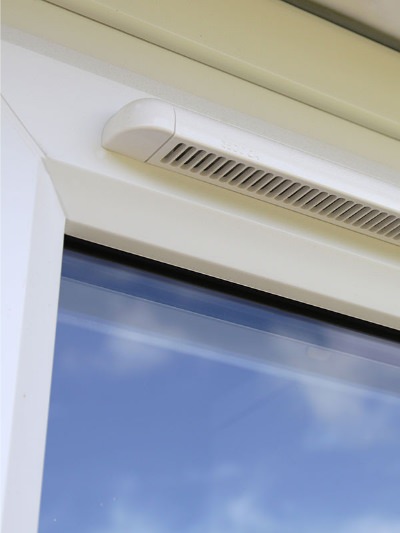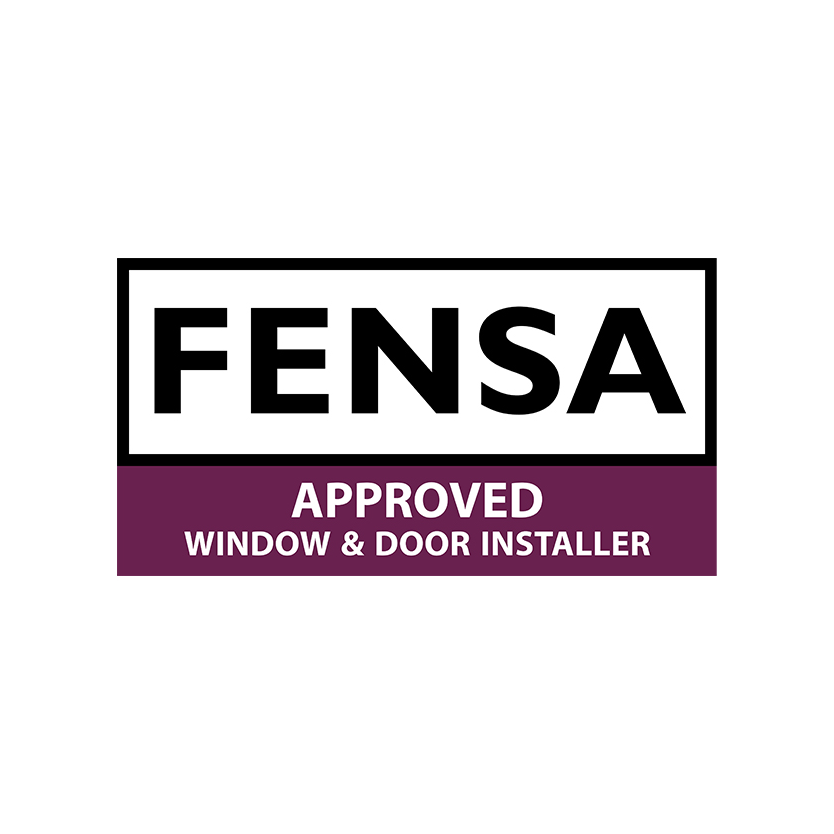
Timber - PVC - Aluminium - Windows, Doors & Conservatories in Hampshire
Complete Guide to the Role of Trickle Vents
Complete Guide to the Role of Trickle Vents
What are trickle vents? Simply put, they are small, adjustable vents located at the top of a window or door frame. They are designed to provide constant, background ventilation to a room, helping to remove damp, stale air even when the window is closed.
New UK building regulations have sparked a nationwide debate about these components. Are they a vital tool for home health or an unnecessary, draughty extra?
This guide explains exactly what trickle vents are, why they are now a legal requirement for most installations, and the real-world pros and cons for you as a homeowner.

Table of contents
KEY TAKEAWAYS: Trickle Vents Guide Summary
Here’s what you need to know, fast:
- What Are They?
- Small, adjustable vents built into the top of a window or door frame.
- What Do They Do?
- Provide continuous, “background” ventilation, allowing fresh air in and letting damp, stale air out—even when windows are closed.
- Why Bother?
- They are crucial for reducing condensation, preventing mould growth, and improving overall indoor air quality by removing pollutants and allergens.
- Are They Required?
- Yes. UK Building Regulations (specifically Approved Document F) mandate them for most new window and door installations to ensure adequate ventilation.
- The Main Benefit:
- A constant flow of fresh air creates a healthier living environment without compromising your home’s security or energy efficiency.
What Are Trickle Vents and How Do They Work?
What are they?
A trickle vent is a passive ventilation device designed to maintain healthy indoor air quality. You will find them installed in the top of a window frame (or sometimes in the sash), appearing as a small, slotted grille with an adjustable slider you can open and close.
The Mechanics
The principle is simple. They provide a continuous, controlled ‘trickle’ of ventilation from the outdoors. This allows the stale, humid air inside your home (caused by cooking, showering, and even breathing) to escape, while simultaneously allowing a small amount of fresh, drier air to enter.
This constant background ventilation is essential for regulating humidity, preventing condensation, and cycling out indoor air pollutants.
Scenario A: Replacing Existing Windows (The Part F Requirement)
| Existing Window Condition | Compliance Requirement | Why? (Rationale) |
|---|---|---|
| Old Window HAD Vents | MANDATORY: New vents must be at least the same size (EA). | You cannot reduce the home’s existing background ventilation rate. |
| Old Window HAD NO Vents | MANDATORY: New windows **MUST** include compliant trickle vents. | New windows are much more airtight, which would otherwise significantly worsen air quality and condensation. |
| Listed/Conservation Area | POTENTIALLY EXEMPT. Seek specialist/local authority approval. | Historic buildings are often considered “naturally ventilating” and visual impact is a key factor. |
Scenario B: New Construction or Whole-House Ventilation Strategy
| Home Ventilation System | Trickle Vent Requirement | Rationale |
|---|---|---|
| Mechanical Ventilation with Heat Recovery (MVHR) | NOT REQUIRED. Do not install. | The MVHR system handles both air supply and extract more efficiently than passive vents. |
| Continuous Mechanical Extract Ventilation | REQUIRED. | The system extracts air, but passive trickle vents are needed to provide the required “background supply” of fresh air. |
| Natural Ventilation (Standard) | REQUIRED. | Trickle vents are the mandatory source of background ventilation in this scenario. |
*Disclaimer: The above information is for guidance based on Approved Document F (2022). Always ensure your certified installer confirms the precise requirements for your specific property and project.*
Why Are Trickle Vents a Legal Requirement Now? (Part F Regulations)
This is the most critical and least understood part of modern window installation.
The Cause (The Problem)
In our drive for energy efficiency, we’ve made our homes incredibly airtight with high-performance double glazing, draught-proofing, and insulation. While this saves on heating bills, it also traps moisture and pollutants, leading to poor indoor air quality, which can contribute to respiratory issues.
The Fix (The Regulation)
The UK government updated Approved Document F (Ventilation) of the Building Regulations in June 2022 to combat this. The new rules state:
- Mandatory Installation: Trickle vents are now required in most replacement windows and doors.
- The Key Rule: When you replace windows, the new ones must have trickle vents, even if the old windows did not.
- No “Worsening” the Situation: The ventilation for your home must not be made worse by the installation of new, more airtight windows. In almost all cases, this means vents must be added.
- Exceptions: There are some exceptions for listed buildings or properties in conservation areas, but for the vast majority of homes in Hampshire, the rule applies.
Compliance is not optional. As a FENSA-registered installer, KJM Group ensures all our installations fully comply with these regulations, protecting your home and ensuring your installation is certified.
The Benefits of Trickle Vents for Your Home
While they are a legal requirement, trickle vents also offer significant practical benefits:
- Prevents Condensation and Mould: This is the main benefit. By providing an escape route for water vapour, you dramatically reduce the chances of moisture settling on cool surfaces, stopping damp and black mould at the source.
- Improves Indoor Air Quality: They help to remove indoor pollutants, allergens like pollen and dust, and odours from cooking, creating a much healthier living environment for your family.
- Secure Ventilation: You can keep your home ventilated without having to leave a window open, which is a major security risk.
- Energy Efficient: They are a “background” solution, designed to work with your home’s energy efficiency—unlike “purge” ventilation (opening a window wide), which dumps all your paid-for heat outside.
Addressing Homeowner Concerns: The Downsides of Trickle Vents
We understand that, despite the benefits, homeowners often have concerns about introducing small openings into their brand-new, energy-efficient windows.
- Aesthetic Impact (Looks): Historically, trickle vents were bulky and unattractive. Modern trickle vents are designed to be far more discreet, often integrated seamlessly into the window profile to minimise visual disruption.
- Noise Pollution: The biggest trade-off with any ventilation solution is noise. Because a vent is a small opening, it can allow some external noise to enter. If you live near a busy road, we can discuss Acoustic Trickle Vents, which are specifically designed with noise-dampening structures to reduce sound transmission while maintaining airflow.
- Draftiness and Heat Loss: Some people worry about a constant draft. Trickle vents are designed to allow controlled airflow, not a wide-open draft. While you may notice a very slight cool spot near the vent, the health and condensation-prevention benefits outweigh this minor issue. They can also be manually adjusted or closed in extreme weather.
- Maintenance: Vents can sometimes accumulate dust. This is easily fixed with gentle cleaning during your regular window maintenance, ensuring they remain fully operational.
Need advice on acoustic trickle vents or discreet design options?
Get Your Free Quote TodayCommon Mistakes and Installation Issues
A trickle vent’s effectiveness can be compromised if not used correctly.
- Blocking or Closing Vents: The most common mistake. Homeowners feel a slight draught and close the vent permanently. This defeats the entire purpose and will likely lead to a return of condensation. Vents are designed to be left open.
- Painting Over Them: During redecoration, vents are often painted shut, blocking the mechanism and airflow.
- Incorrect Installation: A professional installer will ensure the vent is positioned correctly for optimal airflow and weather sealing.
- Failing to Clean: Vents can become clogged with dust. They should be gently vacuumed or wiped as part of your regular window cleaning.
Ready to Improve Your Home’s Air Quality? Get a Free Quote
Don’t risk non-compliance or a future filled with damp. Our team can advise on the exact requirements for your property and provide a no-obligation quote for A-rated windows that meet all 2022 Building Regulations.
Visit Our Andover Showroom & Get DirectionsFrequently Asked Questions
This depends on your project, as per Part F of the Building Regulations:
- New Builds & Extensions: No. Trickle vents are mandatory to ensure the new structure has adequate background ventilation.
- Replacement Windows: This is more nuanced. The rule states that if your *old* windows had trickle vents, the new ones *must* have them. If your old windows did *not* have vents, you may still be required to add them to meet the new ventilation standards, especially if you are increasing the airtightness of your home.
When open, they allow a small, controlled flow of fresh air. This is not the same as an uncontrolled, gusty draught you would get from a poorly sealed window. This micro-ventilation is essential for preventing condensation, damp, and mould growth.
The amount of air let in is very small and is designed to create gentle air circulation, not a cold blast. In fact, removing damp, humid air (which is harder and more expensive to heat) can help your room feel warmer and more comfortable.
This is a common concern, especially for homes on busy roads.
- Standard Vents: A standard vent is an opening and can let in some external noise.
- Acoustic Vents: For high-noise areas, you can upgrade to ‘acoustic-rated’ trickle vents. These have a special foam lining that dampens sound waves while still allowing air to pass through, giving you the best of both worlds.
Yes, this is possible and is known as ‘retrofitting’. It involves a professional cutting or routing a slot into your existing window frame to install the vent. However, it is far easier, neater, and more cost-effective to have them integrated into your new windows when they are manufactured.
Recommended
- Trickle Vents Andover | New Part F Regulations Hampshire | KJM
- Approved Document F, Volume 1: Dwellings – frequently asked questions
- Black Mould Condensation Damp & Insulation | Andover Hampshire
- 2026 Design Trends: The 4 Window & Door Styles Defining the Year - 19 December 2025
- The 2026 Glazing Outlook” – High-level summary of the pivot to growth. - 9 December 2025
- Industry News: The Future Homes Standard 2025 & What It Means for Your Windows - 1 December 2025














